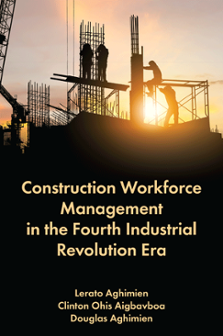
Index
Construction Workforce Management in the Fourth Industrial Revolution Era
ISBN: 978-1-83797-019-3, eISBN: 978-1-83797-018-6
Publication date: 12 February 2024
Citation
Aghimien, L., Aigbavboa, C.O. and Aghimien, D. (2024), "Index", Construction Workforce Management in the Fourth Industrial Revolution Era, Emerald Publishing Limited, Leeds, pp. 207-212. https://doi.org/10.1108/978-1-83797-018-620241009
Publisher
:Emerald Publishing Limited
Copyright © 2024 Lerato Aghimien, Clinton Ohis Aigbavboa and Douglas Aghimien
INDEX
(see also Emotional intelligence (EI))
- Prelims
- Chapter 1: General Introduction
- Chapter 2: Construction Workforce Management
- Chapter 3: Construction Workforce Management in the Fourth Industrial Revolution
- Chapter 4: Workforce Management Theories, Models, and Practices
- Chapter 5: Gaps in Construction Workforce Management Research
- Chapter 6: Conceptualising Construction Workforce Management
- Chapter 7: Exploring the Conceptualised Construction Workforce Management Model Through Experts' Opinion
- Chapter 8: Conclusion
- Index